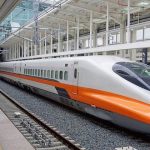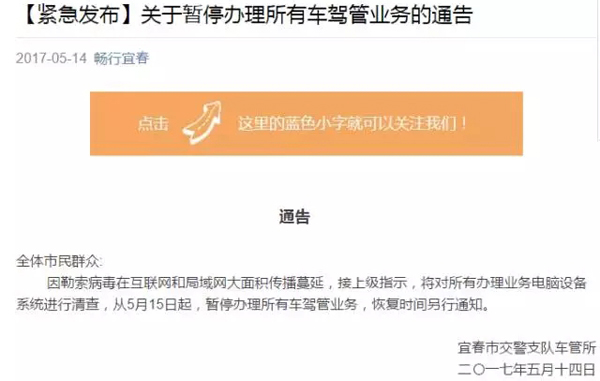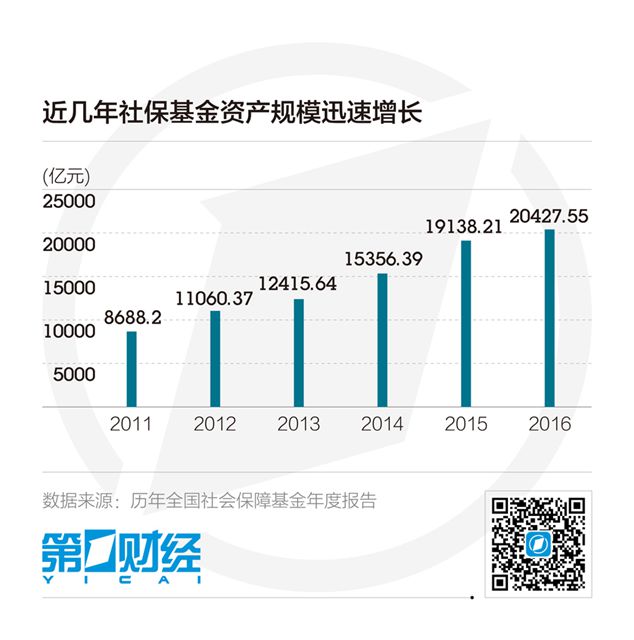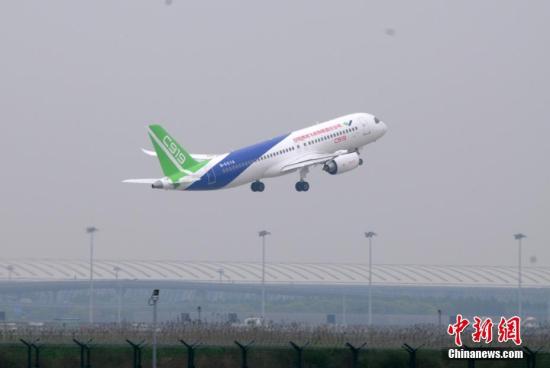The picture shows the C919 taking off. Taken by Sun Zifa, China News Agency reporter Cheng Ziyan, reporter of China Economic Weekly | Shanghai report Editor: Zhou Qi (This article was published in China Economic Weekly, Issue 19, 2017) The 87-year-old Cheng stood trembling in the crowd with crutches from time to time. As the chief designer of yun10, he witnessed the hardships of the pursuit of China’s big plane dream and wanted to witness the historic moment in the history of China’s aviation development. At 2 pm on May 5th, the fourth runway of Shanghai Pudong Airport and the first international mainstream trunk passenger plane C919 independently developed by China took off smoothly. After 1 hour and 20 minutes, the first show in the air was completed. The excitement gradually receded, and the Chinese began to think calmly: How did the “independent development” of C919 come true? In the highly monopolized civil aviation manufacturing industry in the world, how many challenges will C919 face after its first flight to be accepted by the global commercial market? How much economic benefits will this big project, which has carried too much hope of the nation since its birth, drive after the success of the first flight? How is “self-development” realized? It is understood that the research and development mode of C919 is an operation mode commonly adopted by large passenger aircraft manufacturing enterprises-“Master-supply” mode, which has experienced 40 years of exploration in the global civil aviation manufacturing industry. COMAC introduced to the reporter of China Economic Weekly that the operation mode of “main manufacturer-supplier” is based on the consideration of modern enterprise system, and high-quality suppliers in system equipment and body structure are preferred at home and abroad, focus on strengthening the capacity building of aircraft design integration, assembly manufacturing, marketing, customer service and airworthiness evidence collection. In this mode, the developed body components of C919 are mainly supported by domestic suppliers, including radar cover, head, fuselage, wing, etc.; Engines and major airborne systems are based on subscriber requirements, the joint venture or cooperation between foreign suppliers and domestic related enterprises shall be jointly completed. In this regard, some people from outside questioned: “Can C919 be independently developed?” Li Xiaojin, a professor at the School of Economics and Management of Civil Aviation University of China, told the reporter of China Economic Weekly: “Although many components of C919 rely on foreign mainstream suppliers, independent research and development and innovation are indispensable in the production process, more than 30 universities and other scientific research institutions, including Civil Aviation University of China, participated.” For an airplane, what exactly is independent design? Wu Guanghui, chief designer of C919, believes that owning completely independent intellectual property rights is for the overall design of aircraft. This is mainly reflected in three aspects: first, according to the market demand, set the design plan; Second, the supply of parts should conform to the design plan; Third, the system integration is in their own hands. Wu Guanghui believes: “The intellectual property rights of China Commercial aircraft are reflected in the integrated control between systems. There are millions of interfaces on C919, which is related to the connection between hydraulic, aeroponic and other multi-systems and is by no means a simple splicing. How to associate it depends on the design scheme of the aircraft.” According to the reporter of China Economic Weekly, although the global aviation manufacturing industry seems to be in a state of monopoly, in fact, almost no aircraft is completely produced in a factory. For example, 30% of Airbus planes are manufactured in the United States, while Boeing aircraft of Airbus planes are manufactured in Japan. According to the information provided by COMAC to the reporter of China Economic Weekly, Boeing currently focuses on assembly and integration, while other activities are completed by suppliers, this management mode is called supplier management under global risk cooperation. Take Boeing 787, the model with the highest degree of outsourcing production in the world, as an example. In terms of price, Boeing itself is only responsible for producing about 10%-tail and final assembly, the rest of the parts are provided by 40 partners, the wing is produced in Japan, the carbon composite body is produced in Italy and other parts of the United States, and the landing gear is produced in France. Airbus, like Boeing, also adopts the Risk Sharing Strategy in supply chain management, but the difference is that Airbus is more conservative, and Airbus seldom outsourced the key components of the latest model for a long time. For example, after Airbus started the A380 passenger plane project, it outsourced the wings of A320 to Xi’an aircraft manufacturing company for production. Throughout the global international civil aviation manufacturing industry, the manufacturing of civil trunk aircraft has been basically monopolized by Boeing and Airbus. The civil aviation manufacturing industry in other countries is still in its initial stage, with scattered funds and weak technical strength, we can only explore development opportunities in the markets below regional planes. Professor li xiaojin said in an interview with the reporter of china economic weekly: “the main-supply mode of C919 is more appropriate under the current conditions. By selecting the best supplier in the world, it can shorten our various gaps and catch up with external forces.” Comac believes that the “master-supply” mode is an inevitable choice to follow the trend. This mode can effectively integrate into the world’s large passenger aircraft industry chain and accelerate the pace of international integration. New challenge: acceptance of market and customer testing According to the plan of COMAC, the successful first flight of C919 will enter the airworthiness certification stage, accept the airworthiness test of various aircraft, and prepare for knocking on the market door. “Airworthiness evidence” is the premise for large passenger planes to enter the market and the basis for ensuring the safety of large passenger planes. In the field of civil aircraft manufacturing, FAA (Federal Aviation Administration of the United States) and EASA (European Aviation Safety Administration) have actually constituted global standards. If a civil aircraft product wants to enter the global mainstream aviation market, it is extremely important to obtain the certification of FAA and EASA. Before that, the airworthiness certification of the jet regional airliner ARJ21 developed by our country took 6 years, which required multiple tests such as high temperature and cold, natural freezing, etc, these subjects are much more difficult than those tested in the first flight. According to media reports, C919 evidence collection will be a total of 729, and it is estimated that 4200 hours and 2282 flights will complete the airworthiness evidence collection task. Comac believes that the development process of an aircraft is a steep and tortuous curve. Every step upward and forward, it will face a new and seemingly insurmountable obstacle. After the completion of airworthiness evidence collection, whether the aircraft can withstand the inspection of customers and the market is the final standard to test whether the civil aircraft project is successful. Wu Xingshi, a member of the Expert Consultation Group of the C919 large passenger plane of COMAC and the former chief designer of the ARJ21-700 aircraft, once said in an interview with the media that after the first flight of the aircraft was successful, there were three steps to enter the market: the first step, obtain the model certificate and get the pass to the market; The second step is to prepare for mass production and various preparations for customer service. At present, the advanced civil aircraft was one year ago, all the work prepared for customers will be done well; The third step is to enter the market through efficient and safe flight records, gain a firm foothold, and realize development in customer service in the future. According to the reporter of China Economic Weekly, Airbus’s first civil aircraft model A300 has gone through 15 years of ups and downs from brewing to truly achieving commercial success (selling 300 planes). Its first flight was successful in October, 1972. Three years later, only 20 were sold. In 1976, there was no order for 16 months after one was sold in May of that year. It was not until the oil crisis in 1981 highlighted the advantage of low cost that A300 climbed out of the “market mire”. In contrast, C919 is much more smooth: at present, C919 has won 570 aircraft orders from 23 households around the world. Professor Li Xiaojin told China Economic Weekly that: “How to enter commercial applications better and faster is a challenge we are facing. At present, C919 pays more attention to customer needs. Relevant technicians have understood that the good plane in customers’ eyes is safe, comfortable, environmentally friendly and economical. Under this principle, C919 will continue to improve relevant details, for example, strive for airworthiness certification in the United States and Europe in terms of safety to achieve international safety management; In terms of economy, do a good job of benchmarking related to competitors. In short, on the premise of adhering to international procurement, we should more fully investigate the needs of airlines and passengers, and perfect our products around the special needs of domestic users. Especially in the future, C919 may face more challenges from competitors. Not only Boeing, Airbus, but also companies in Brazil, Canada and even Russia have rich experience in this field.” Commercial value and significance: not only pulling the benefits of the industrial chain trillion dollars, but also forcing the upgrading of China’s industrial standards The day before the C919 first flight, the big aircraft concept stocks had already started the capital feast in advance. Boyun’s new material has a strong limit, and the shares of Baoti shares, Guihang shares, and AVIC aircraft have been collectively promoted. C919 “master-supply” mode has 16 material manufacturers and 54 standard parts manufacturers. Insiders believe that in addition to boosting the capital market, the economic benefits driven by C919 will be immeasurable in the long run. According to the annual market forecast report of Comac from 2010 to 2029, China’s air transport market has the strongest demand for civil aircraft, with a total of 4439 civilian aircraft of various types to be supplemented, including 2950 150-seat single-channel passenger aircraft, there are 802 dual-channel jet aircrafts and 687 turbofan jet regional aircrafts, with a total value of more than US $450 billion. In addition, by 2029, a total of 30230 trunk and regional aircraft are needed worldwide, of which 19921 are single-channel aircraft. C919 can correspond to the single-channel passenger plane with the largest demand. So, what economic benefits will C919 bring after it successfully enters commercial application? The most direct performance is to provide more employment opportunities for upstream and downstream enterprises. According to the data, Boeing added 1323040 jobs related to the aviation industry in 2012. A large commercial aircraft integrates 3 million to 5 million spare parts. According to the information provided by comac to china economic weekly, from the upstream, its research and development can drive the group breakthrough of key technologies in the fields of new materials, modern manufacturing, advanced power, etc, it can stimulate the development of many high-tech industries, and the technology diffusion rate is as high as 60%. Moreover, the technological upgrading of the industry inevitably requires the progress of basic disciplines such as fluid mechanics, solid mechanics, computational mathematics, etc. From the downstream, the commercial operation of large civil aircraft has a great influence on civil aviation transportation, aviation finance and other industries. A Japanese study shows that if the value of the industrial pull of the civil ship industry is calculated as 1 yuan, then the car is 80 yuan and the large civil aircraft is 800 yuan. According to the analysis of Guoxin Securities, the price of C919 is about 20% lower than that of Boeing and Airbus, and the single-machine quotation of C919 is only 70 million ~ 80 million US dollars. If the unit price is 50 million US dollars, the first batch of
Read More







